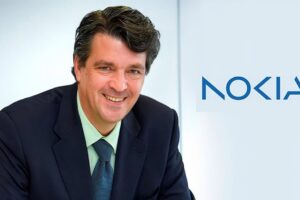
What this brings may be quite interesting, depending upon how things work out. What is intriguing is the merged carrier 3G networks are not currently capable of using similar handsets. At least not yet, due to the different frequencies which each carrier currently operate their own so-called 3G networks. AT&T has a plan to construct a much faster mobile broadband network than it currently does, which is using an extended version of HSDPA. The latest numbers on the new CAPEX investment is around eight billion US dollars and is predominantly going to be spent on covering rural areas, as well as roaming capabilities. There is hope that the business and governmental environment may support such investment for it must return positive equity to its investors or why would they invest in the upgrade? AT&T will gain access to additional spectrum, customers (who they can upsell smart phones and Apples), denser cell coverage in some areas (non 3G) and the fact that both carriers operate GSM brings many facets into scope. Additionally, be default, small as it may be in size now, but Audi just announced today that they selected T-Mobile US to be their wireless carrier of choice for their new A7 program. AT&T may win that business if it completes the acquisition. What is interesting further, is that the automobile manufacturers are getting wise and bringing mobile wireless to the vehicle,where a version of broadband and maybe even m2m, both will be in many manufacturers over time. Another way the operators can develop revenue that is non-voice oriented. The metrics are intriguing.
This act of consolidation may have considerable lessons for which others can watch and learn from. Is there true synergistic value in the pairing of the second and fourth largest operators in the US. Is spectrum the core component of the merger? Will the networks merge their pricing plans without harming existing post paid customers? Will the networks actually be able to share and bring aboard new higher revenue smart phones, which currently can’t operate on both networks as of yet? Will the access to both fixed and mobile broadband at higher speeds increase? T-mobile subscribers do potentially and possibly gain the iPhone but this is chiefly by having to switch to a probably proposed new rate plan from the old AT&T for them to move to the Apple program. Bandwidth caps and throttle down bandwidth is currently already in practice by each carrier respectively, however some sort of continuity of pricing, marketing, handsets, development on the 4G future networks and other very important activities will be quite complex.
Carriers such as Etisalat Group, STC Group, Orange, Batelco Group, Orascom, MTN Group and others in the SAMENA region who already or will have similar statistics in subscribers are all facing some of the same issues. Where does conformity to standards across borders come to play and how far will consolidation go. The issues are actually quite different for the SAMENA region carriers as opposed to those in North America or in other large population developed markets, where there may be one single policy maker / regulator across the board for the entire one hundred twenty million plus subscribers. There is the good side, where mobile operators such as Verizon and AT&T can concentrate on one body such as the FCC, which is responsible for regulations and policy (sometimes stretching their understanding of what policy making and policy enforcement actually mean and for what they are authorized to enforce and etc.). However with one entity for the most part such as the FCC making creating regulatory framework and policies (within certain restrictions) such as net neutrality recently, having only one policy maker / regulator sort of forms an “all your eggs in one basket” sort of situation, or as they say, an all or nothing proposition and this for a population base of about 300 million people.
Unlike the situation in the US or even to a certain extent in the EU, operators in the SAMENA, African and Asian regions, who own and operate multiple operators across multiple borders, must deal with the interests of multiple facets, including in mostcases, both the legislative (Ministerial) institutions and the sometimes totally independent and sometimes not so independent regulatory bodies. Thetask itself is quite vexing for the operators to manage, let alone with different policy makers and regulators in each country market where an operation is located. This causes an extended need for the operators across the region, for an understanding with a certain dose of continuity and yet flexibility for each market’s special conditions. SAMENA and its member operators are working hard to work with each market’s stakeholders to bring the very best out of each situation for all stakeholders. This includes the socio – economic dividends from the investments that the industry makes on a continual basis, where the consumers, policy makers, regulators and service providers all work to affect positive development and growth in the market specifically tailored to the needs and requirements of each specific region.
This environment calls for the operators to constantly review where to consolidate internally and how to capture greater value for its invested assets (monetary, human resources, infrastructure(s), customers and much more) across the spectrum of countries where the operators lie, along while having to manage dealing with a constant new flow of policies and potential regulation with regard to convergence, net neutrality, content stress on the network, unbundling, shared infrastructure and many other important issues. This is in addition to handling the stress on investment return and the need for the development of multiple positive investment friendly infrastructure policy environments. All stakeholders have a very important role in the market place, where dialogue, creative new business models and ideas, along with and positive interplay between all vested partners is absolutely a must.
These times are different. The market has changed. The actual platform of choice has changed, where the internet is the new method of communication, where traditional voice percentage of total message traffic is declining in ratio to data message traffic, where smart phones that have the best social network interfaces tend to outsell all others as far as growth in the market, where fiber and high speed wireless transmission help in assisting in determining the revenues of an operator rather than the number of switch ports, where e and m mean the connotation of electronic (digital) and mobile to (E)health, (M)payments, (E)inclusion and many other means of value add proposition rather than the old legacy meaning of ear and mouth (E&M).
Becoming the partner of choice is absolutely the evident focus of the operators going forward in a digital content crazy environment. It is imperative those opportunities such as those that AT&T and thus, the potential acquisitions of the future, including maybe Zain by Etisalat, Natrindo Telepon Seluler (NTS) Axis by STC and others willbring a strong opportunity for harmonized policy, with all the variables that are involved working toward progress, rather than in a destructive mode. At the end of the day, all the stakeholders must work proactively together to manage the potential vortex should they choose not to synthesize a productive environment. Efficiency is highly important when the investment can be in the billions.
These are different times, yet we are certain the future will ring loud and clear with vibrancy not yet experienced in earlier times. The adopted saying of “change is opportunity and the ICT industry is always changing” may apply here most assuredly.











